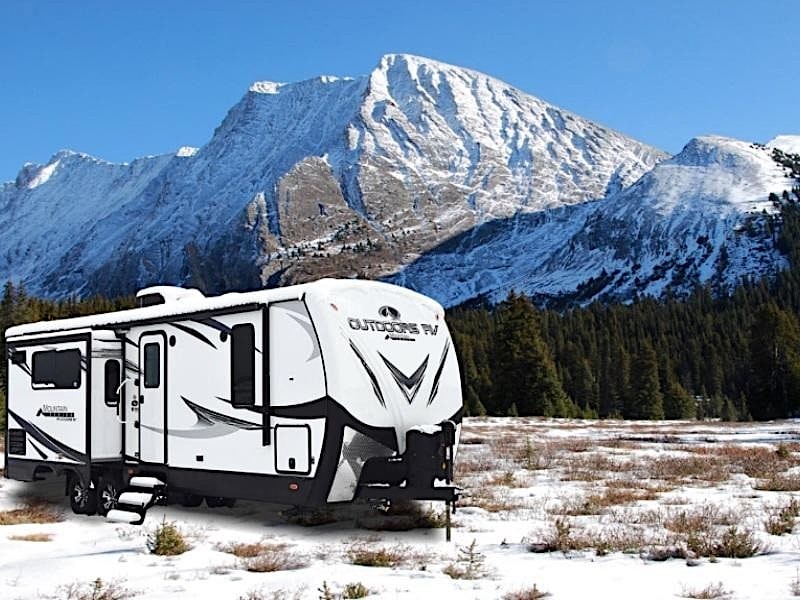Thanks for your support! If you make a purchase using our links in this article, we may make a commission. And, as an Amazon Associate, I earn from qualifying purchases. See the full disclosure here.
Updated April 6, 2024
We are frequently asked which RVs are Best for Cold Weather Camping. Some folks ask which are the best 4 season RVs. Either way, people ask which RVs are best insulated for cold or hot camping.
In this article, we have found the best RVs and campers for cold weather camping, but they are also great in hot conditions in the summer months.
What Is A Four-Season RV?
Four-season (or all-season) RVs have the capability to withstand winter conditions. Many cold-weather coaches have the insulation, plumbing, and other components to handle temperatures as low as zero degrees Fahrenheit. All-season RVs have strong structural support to handle the weight of snow on the roof, strong winds, and other harsh conditions you’ll find in mountain or northern areas.
Some RV manufacturers build their coaches to be all-season RVs, while others offer cold-weather packages that enhance or replace certain components. The packages are usually add-on components to their regularly built RVs. The RV maker doesn’t change the insulation, but the insulation’s R-value is still strong enough to handle below-freezing climates.
Almost every RV now comes with sealed underbellies and heated/insulated holding tanks. This helps all coaches with late-season camping. If you want to adapt your current RV for winter conditions, there are many things you can do to enjoy the winter camping experience. For further details, check out our many different related articles on cold-weather camping.
10 Best RVs for Cold Weather Camping
The best RVs and campers for cold weather (or hot weather as well) feature premium insulation, solid construction, heated and enclosed underbellies, and often include off-road and boondocking capabilities. Here is a list of some of the best, fulfilling all or most of those categories!
1. Arctic Fox North Fork 28F
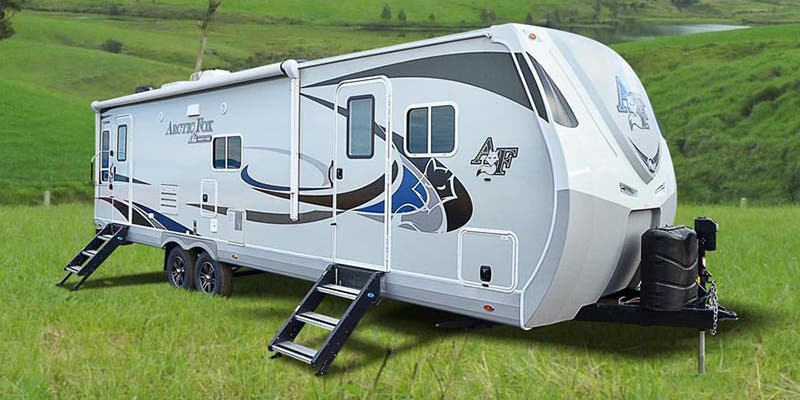

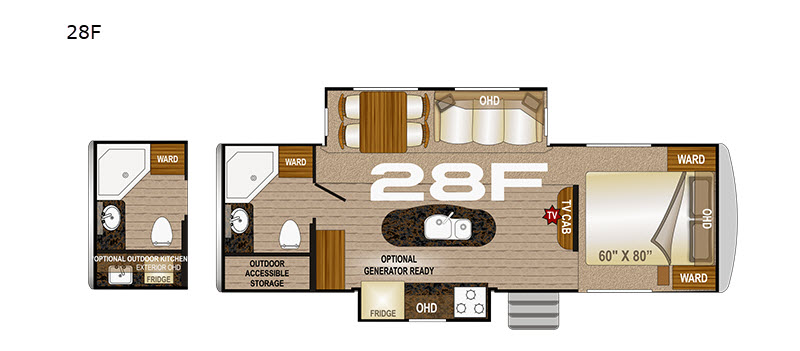
Our Pros and Cons
✅ Multi-layered substrate walls with an off-road-ready chassis
⛔ Low sleep count for its size
- Length: 30′
- UVW: 8,302 lbs
- GVWR: 11,000 lbs
- CCC: 2,698 lbs
- Tongue Weight: 769 lbs
- Sleep: 4
The Arctic Fox is a singular-minded beast, with a wholehearted focus on rolling out into the unknown, bitterly cold environments where other comparable RVs simply can’t follow. The structural steel, off-road chassis makes up the robust and highly durable skeleton, while the interior is protected by single-piece, corona-treated, continuous layered fiberglass walls.
Whether it’s snow or rain, all RVers worry about leaks. Fortunately, Arctic Fox nipped that issue in the bud with a single-piece, seamless roof membrane. The holding tanks are heated and enclosed, and the RV includes Arctic Fox’s “all-conditions” insulation package. Inside an Arctic Fox North Fork 28F, you can probably survive living on the surface of Mars.
2. Keystone Alpine Avalanche 338GK
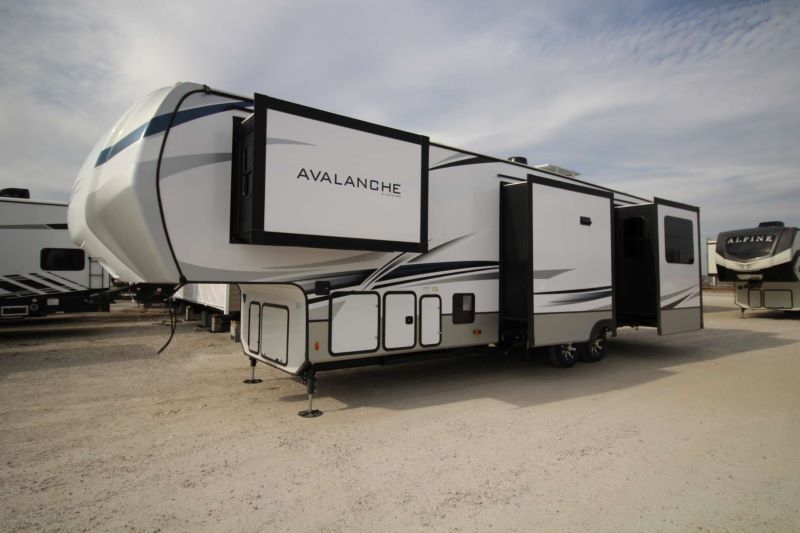

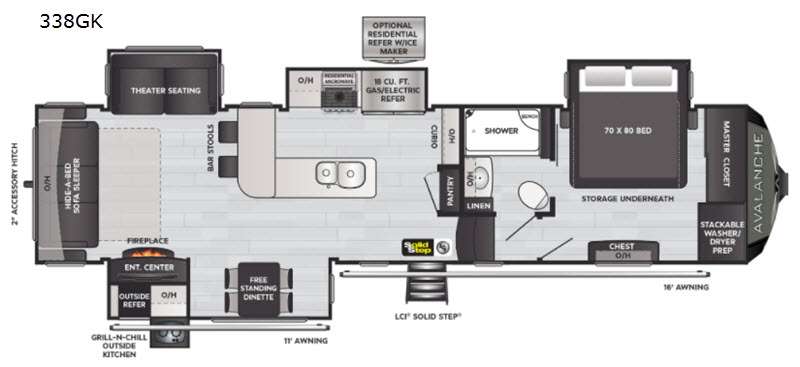
Our Pros and Cons
✅ Massive, cozy interior with a huge, L-counter in the kitchen for plenty of counter space
⛔ Low sleep count
- Length: 38′
- UVW: 12,350 lbs
- GVWR: 15,500 lbs
- CCC: 3,150 lbs
- Tongue Weight: 3,000 lbs
- Sleep: 4
The Keystone Avalanche conjures images of thousands of tons of snow, moving at blinding speeds, decimating everything in its path. The Keystone Alpine Avalanche 338GK can’t match that description, but it’s a beast nonetheless. With a Road Armor rubber pin box hitch, towing is a breeze, regardless of terrain.
The roof and walls are encapsulated in Astrofoil insulation, which is a high-density block foam. The frameless windows deter leaks, and the standard 6-point hydraulic auto-level is a fantastic additional touch. The heated and enclosed underbelly is expected, and the 338GK doesn’t disappoint.
3. Northern Lite 10-2EX
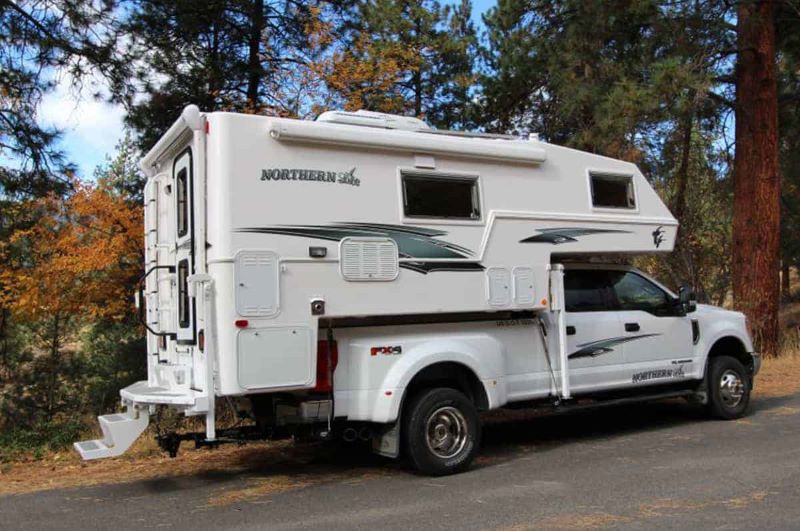
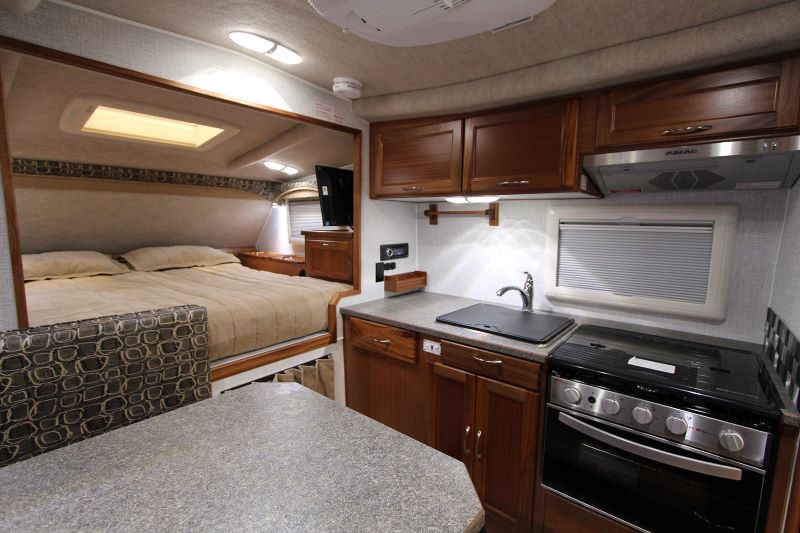
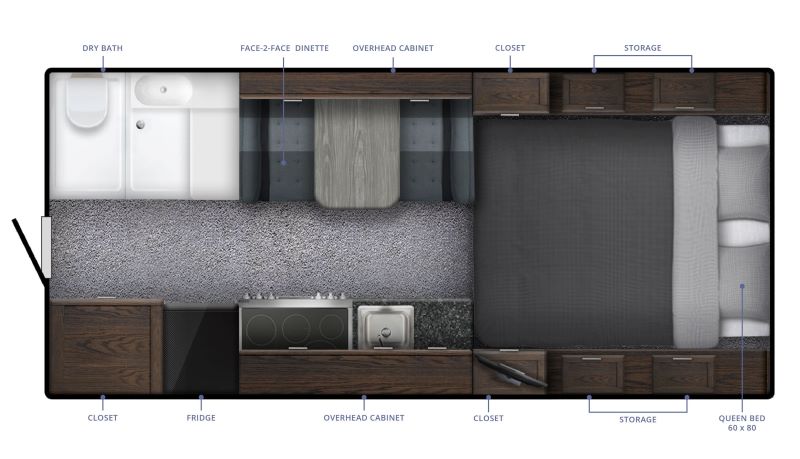
Our Pros and Cons
✅ You gotta love the dual-piece fiberglass, similar to Oliver and Scamp campers
⛔ Storage is a little limited
- Truck Category: Long Bed
- Bed Length: 131″
- Exterior Length: 18.2′
- UVW: 3,360 lbs
- Center of Gravity: 48″
- Sleep: 4
Speaking of beasts, the Northern Lite 10-2EX comes with a 6-year structural warranty and it’s built similar to the smallish, nearly impervious travel trailers otherwise known as Scamps, Olivers, Escapes, etc. A two-piece clamshell design does much for keeping rain and, more importantly in this discussion, snow out.
For a truck camper large enough to sleep four, it’s surprisingly lightweight. It also holds a wet bath (a dry bath in other floor plans) within its chopped fiberglass, gel-coated exterior. You also get two external battery boxes, an 18-gallon black tank, dual-20-lb propane tanks, and an Atwood furnace to keep you nice and toasty inside.
4. Bigfoot 2500 10-6
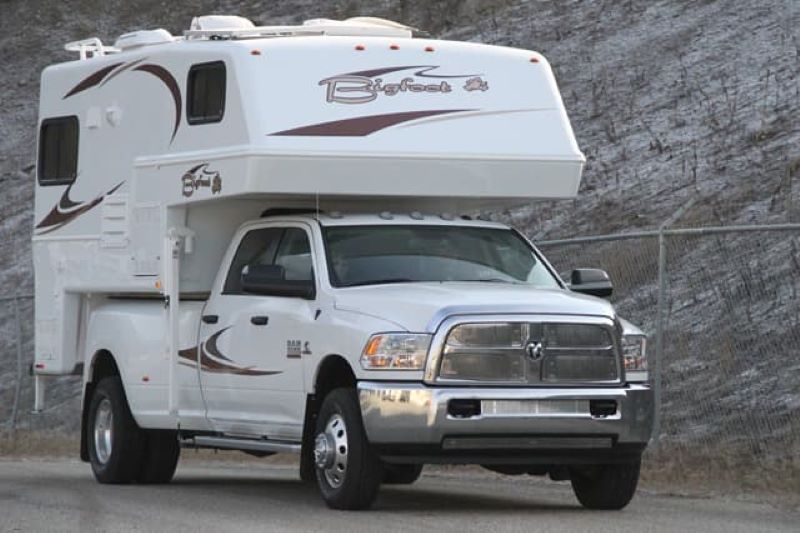
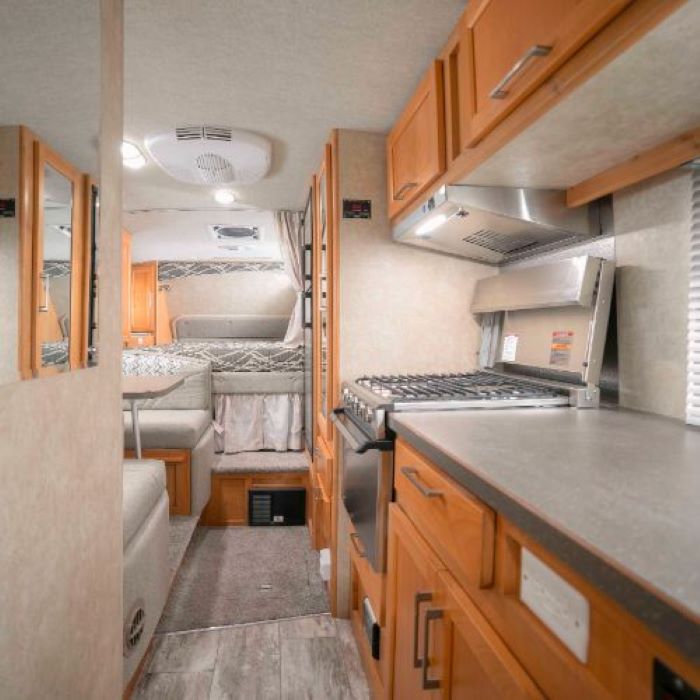
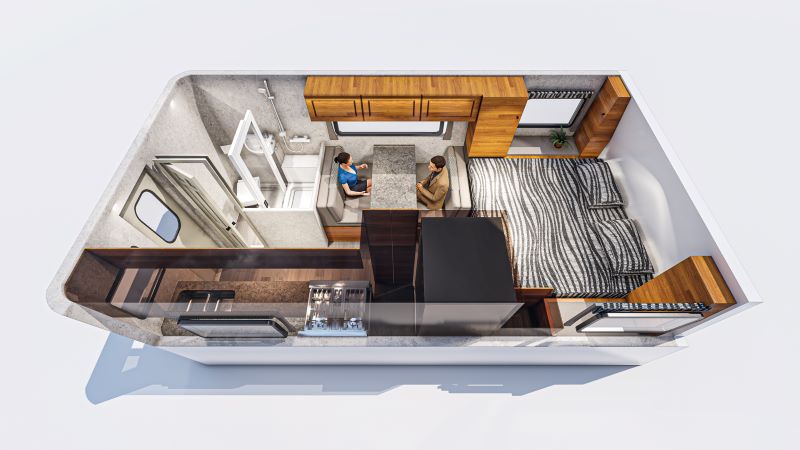
Our Pros and Cons
✅ Sizeable dry bath
⛔ Sliding in and out of bed might be a pain for couples since the dinette is in the way
- Truck Category: Long Bed
- Bed Length: 10′ 6″
- Exterior Length: 17′ 11″
- UVW: 1,443 lbs
- Center of Gravity: 50″
- Sleep: 2
Bigfoot is the second track camper on our list and the second to feature the excellent clamshell two-piece design. While it lacks the fantastic, panoramic window feature of its smaller cousin, it has a full dry bath, which is a luxury for many truck campers. If you’re looking for RVs and campers that hold an edge in cold weather, Bigfoot manufactures some of the strongest, weather-resistant campers on the market
Plenty of large and small storage options exist below the glittering stainless steel surfaces and rich cabinetry. It also includes a built-in generator, an electric water heater (with a switch), and an electric awning. As a non-slide, two-piece camper, leaks are a rare consideration, especially if you’re expecting snow cover.
5. Winnebago Solis 59X
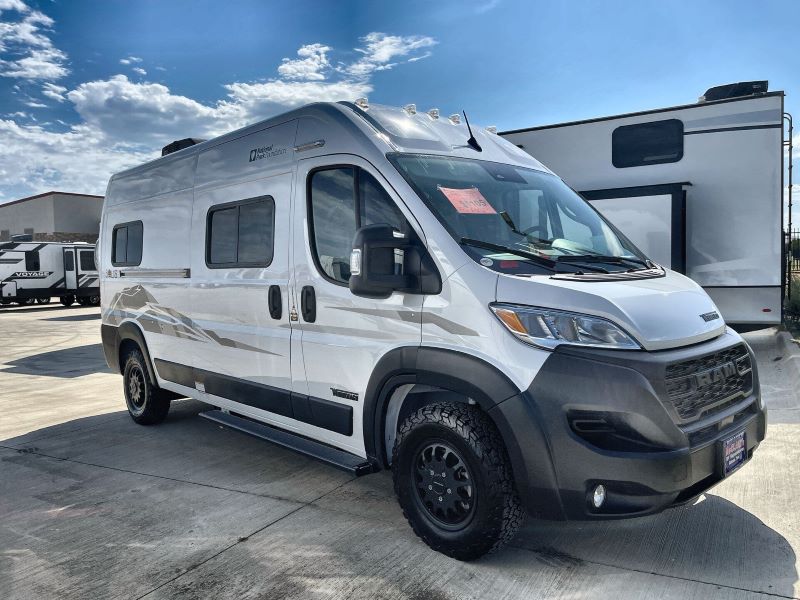
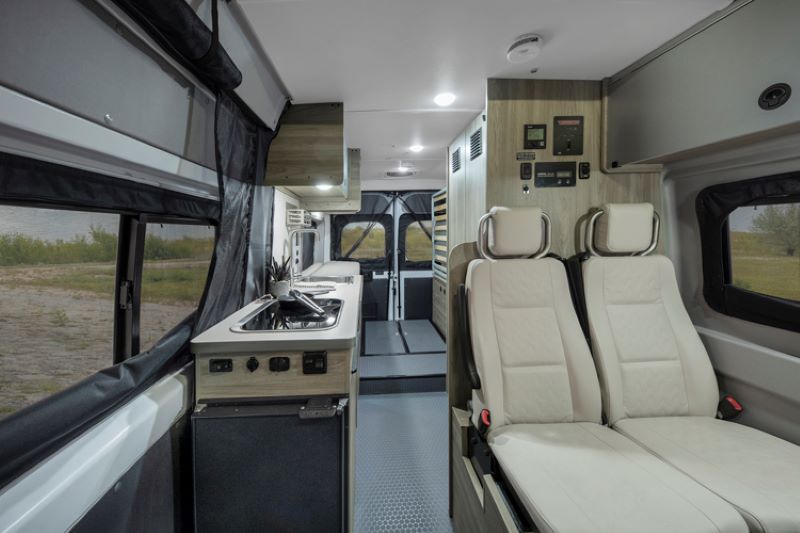
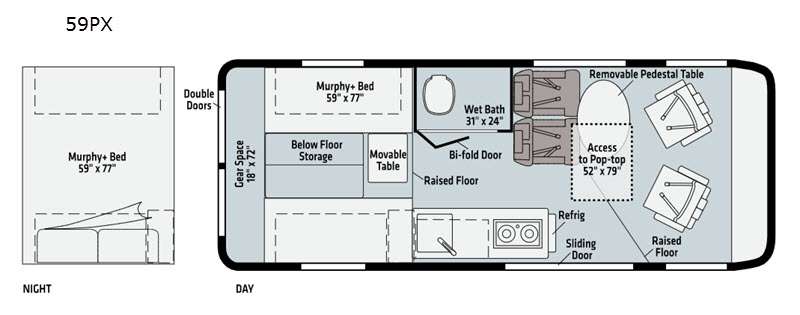
Our Pros and Cons
✅ 24 mpg highway and 20 mpg in the city is pretty good for a Class C
⛔ Heater doesn’t maintain a consistent temperature throughout
- Engine: Penstar VVT V6
- Length: 21′
- Tow Capacity: 5,100 lbs
- Chassis: ProMaster 3500
- GVWR: 9,350 lbs
- Sleep: 4
It’s rare to spot a non-Sprinter chassis in our Class C lineups these days. Fortunately, we found the Winnebago Solis, and it’s absolutely perfect for cold-weather adventures. Not only does it get fantastic gas mileage, but it’s also packed with everything you expect in a larger camper, including solar panels, a generator, a toilet, a fridge, a stove, a shower, and a small office space.
In terms of weather, the Solis is versatile, withstanding the heat of a South Florida beach and the wintry blast of a Chicago wind. The waterlines are above the floor, keeping them free of freezing temperatures. Also, the drainage system is heated, and the roof and sidewall insulation include automotive-grade foam insulation.
6. Airstream Atlas
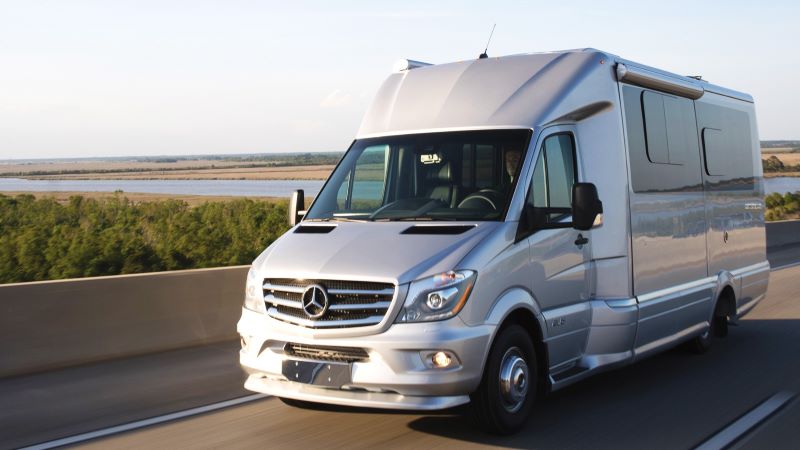
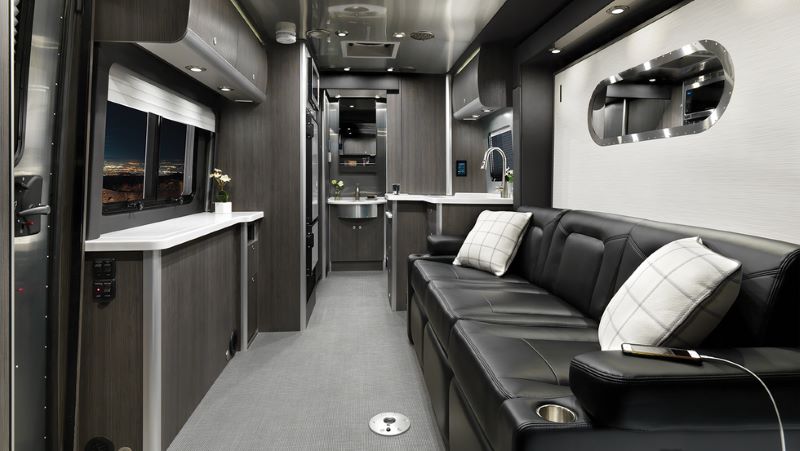
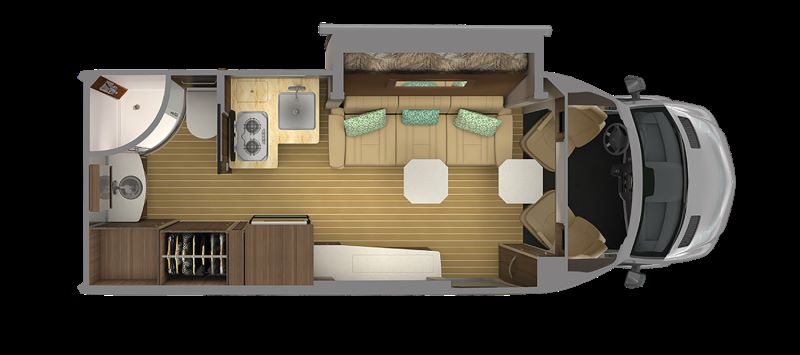
Our Pros and Cons
✅ The fiberglass body of the Airstream Atlas is seam-free
⛔ Two-burner cooktop is tiny and not of premium quality
- Engine: Mercedes-Benz V6
- Length: 24′ 9″
- Tow Capacity: 5,000 lbs
- Chassis: Mercedes-Benz Sprinter 3500
- GVWR: 11,030 lbs
- Sleep: 3
It’s hard to think of an Airstream that doesn’t conjure visions of a rounded, shining, dome-like structure. However, Airstream manufactures Class Bs as well and the Atlas is a state-of-the-art, four-season, luxury Class B. The interior is vintage Airstream, with gleaming surfaces and an all-over, metallic aesthetic.
The Atlas includes a Murphy bed on a Frolis system, allowing for more living space throughout. An air-spring suspension system is more tolerable for off-road campaigns, and the entire body of the camper is a one-piece, seamless aluminum masterpiece of weather resistance.
7. Oliver Legacy Elite
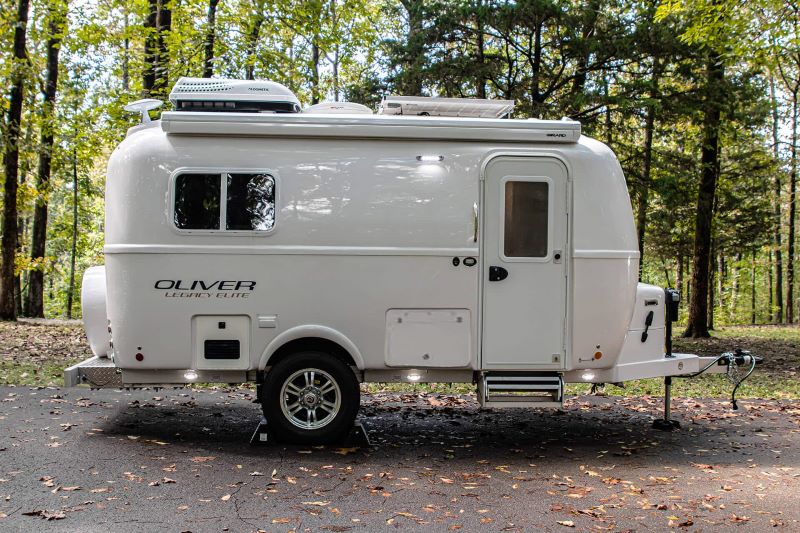

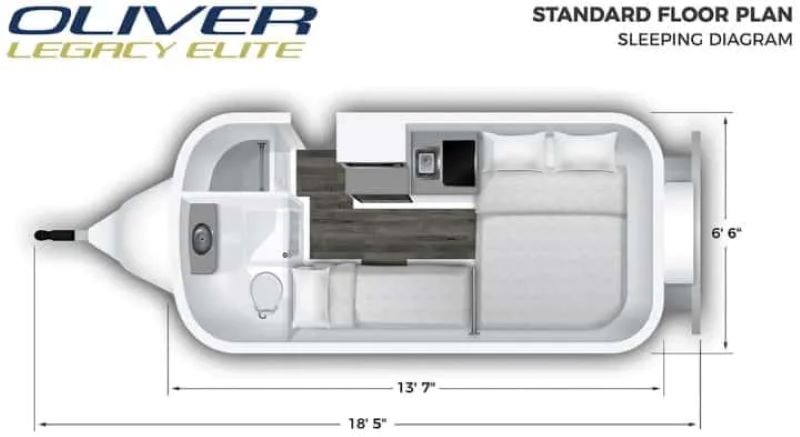
Our Pros and Cons
✅ Incredible build quality with premium insulation and a boondocking-ready setup
⛔ 1,300 lbs of CCC feels like a lot less with little in the way of storage options throughout
- Length: 18′ 5″
- UVW: 3,700 lbs
- GVWR: 5,000 lbs
- CCC: 1,300 lbs
- Tongue Weight: 490 lbs
- Sleep: 3
Of all the RVs and campers built for cold weather, Olivers seemingly get the least love. It’s a real shame too, as the Oliver Legacy Elite is a monster of durability, kicking butt and taking absolutely zero names. The two-piece fiberglass construction means leaks are a figment of the imagination.
Since it is sold factory-direct, consumers have a lot of say in what goes into it. However, boondocking capabilities are built right in, including 630 Ah lithium batteries, a 3k-watt inverter, 340 watts of solar, a Nature’s Head composting toilet, a 32-gallon freshwater tank, dual-power stabilizers, and a power tongue jack.
8. Heartland North Trail 26FKDS
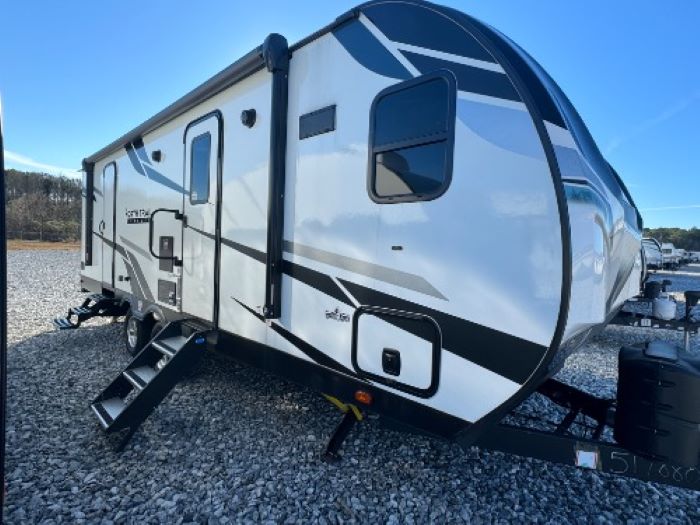
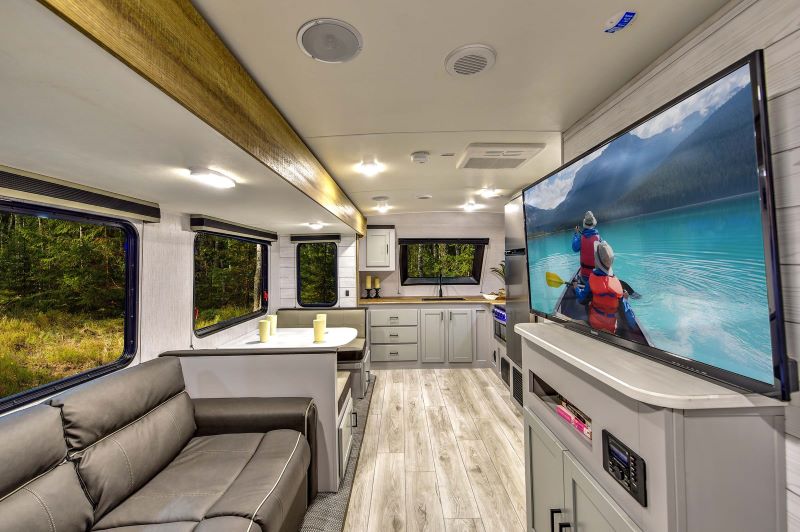
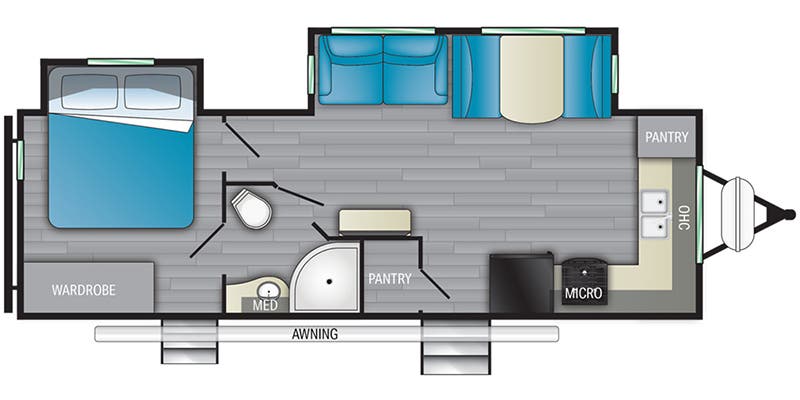
Our Pros and Cons
✅ Large and spacious L-shape kitchen
⛔ Carpeted slide
- Length: 29.7′
- UVW: 6,672 lbs
- GVWR: 9,772 lbs
- CCC: 3,068 lbs
- Tongue Weight: 972 lbs
- Sleep: 6
The Heartland North Trail 26FKDS is one of those travel trailers that try to do everything, which makes plenty of sense if you’re looking for RVs and campers with cold-weather resilience. The heated and enclosed underbelly rides on a Wide-Trax suspension system. The wheels are defended with galvanized metal, and the slam-latch baggage doors stay closed.
The walls will keep you warm behind 2″ thick Azdel lamination and non-wood substrate; even the pass-thru storage is insulated. For boondockers, the 26FKDS is solar-prepped, and the single-piece roof will help[ minimize those disastrous leaks over time and the age of the travel trailer.
9. Jayco Redhawk 29XK
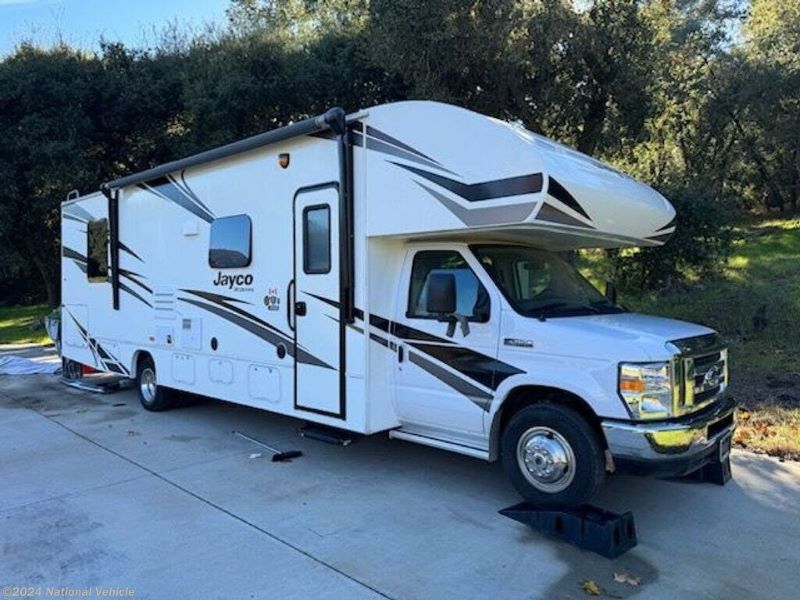
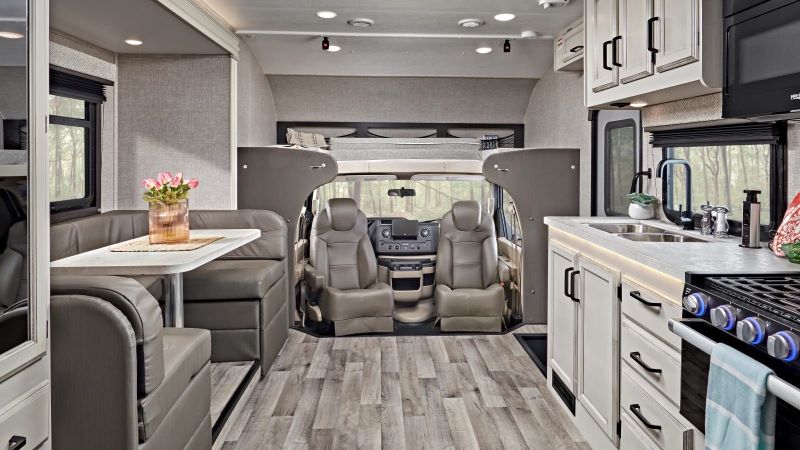
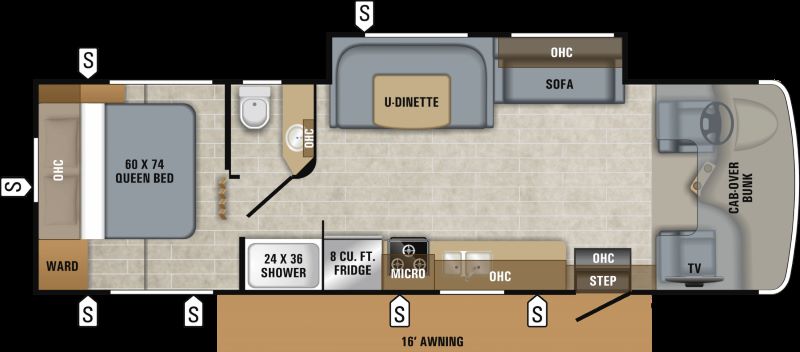
Our Pros and Cons
✅ Very spacious bedroom with a queen bed, plenty of walk-around room, and a wardrobe
⛔ TV is in an inconvenient location
- Engine: Ford V8
- Length: 32′ 6″
- Tow Capacity: 7,500 lbs
- Chassis: Ford E450
- GVWR: 14,500 lbs
- Sleep: 8
Redhawk is one of the more popular Class C options Jayco offers. It’s also one of the best RVs and campers for cold-weather living. The TPO laminated roof sits over StrongholdVBL sidewalls and floor. The bead-form insulation is rated R-24 Max (roof), R-9 Max (floor), and R-5 Max (walls).
The winterization drainage system is standard as well, with an interior 31k BTU DSI auto-ignition furnace to keep you warm and toasty. It also comes with a 12.2-gallon propane tank and a 4k-watt Onan generator. Solar prep and a ladder to access the roof make it easy to set up your boondocking preferences.
10. Coachmen Encore 375RB
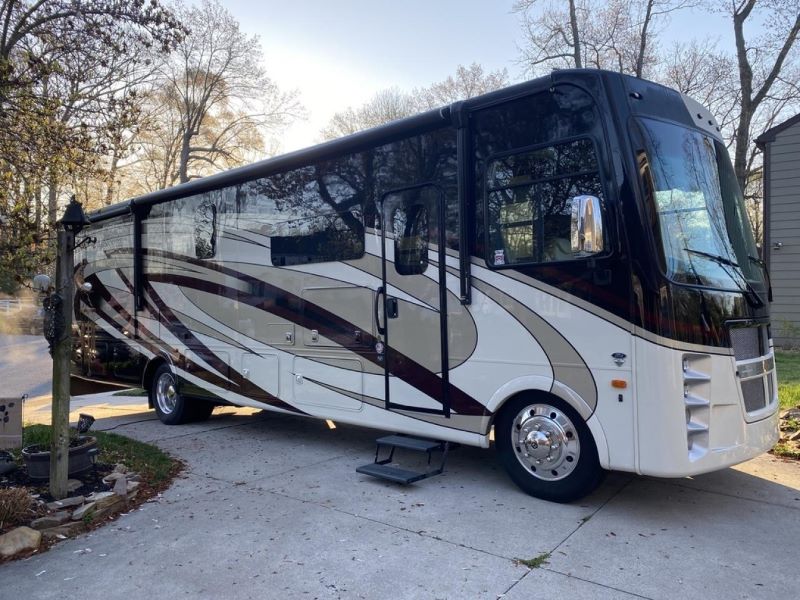
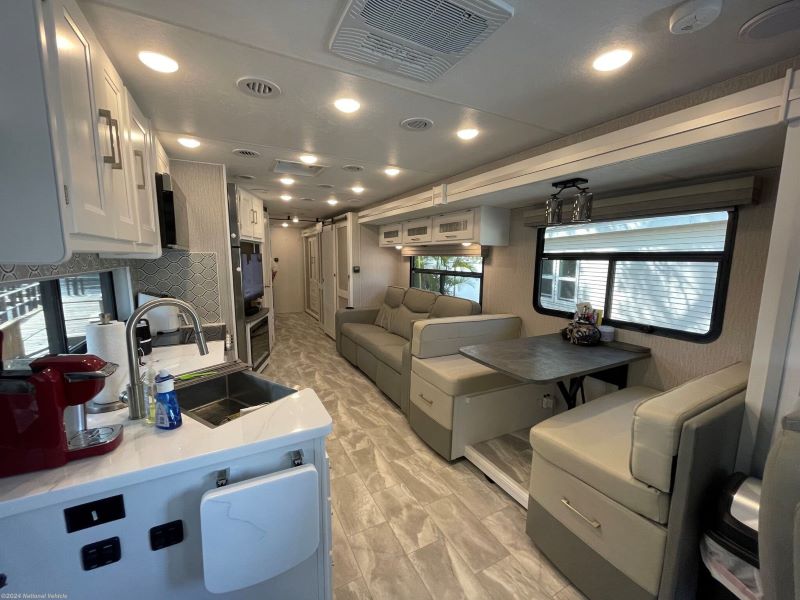
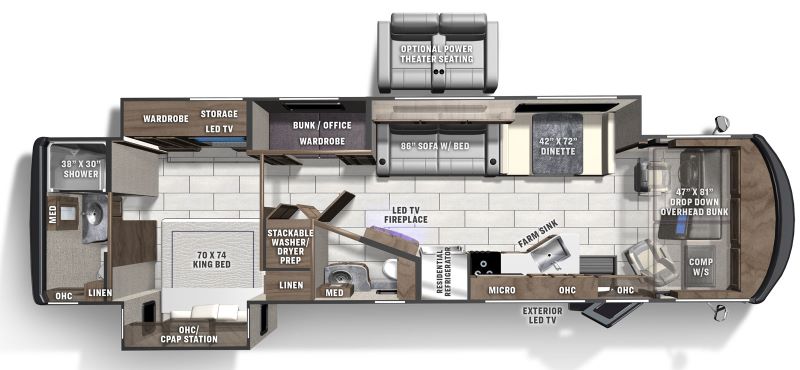
Our Pros and Cons
✅
⛔
- Engine: Ford V8
- Length: 38.17′
- Tow Capacity: 5,000 lbs
- Chassis: Ford F53
- GVWR: 22,000 lbs
- Sleep: 9
Last but not least, on our list of RVs and campers for cold weather is the Coachmen Encore 375RB. It features a crowned, laminated fiberglass roof with Azdel SuperLite composite walls and Oyster gel-coating. Even the exterior bus-chrome mirrors are electrically heated.
If you have a lot of work to do and it’s snowing outside, the passenger seat area converts into a micro-office space with enough room to do your remote work. In the meantime, the 35k BTU E.I. furnace will keep your toes warm.
What Temperatures Are Four Season RVs Rated For?
RVs and campers with cold weather and four-season attributes may have various ratings. However, the generally accepted rule of thumb equates to comfortably living and sleeping in temperatures below 20°F and above 90°F. Oftentimes, hotter temperatures aren’t a consideration when choosing four-season RVs.
But when you think about it, all of that premium insulation is just as effective at keeping the heat out as the cold. There are virtually zero campers out there that will maintain a sustainable, comfortable interior temperature in a consistently sub-zero environment—maybe for a night or two, but no longer.
Who Needs a Four Season RV?
Weekend RVers living in the South’s warmer temperatures probably don’t need a four-season camper. But if you spend your time running your RV from the Florida Keys to Minnesota, a four-season variant should be high on your list.
Remember, it’s not just a cold weather thing. It gets awfully hot in South Florida, Arizona, South Texas, etc. So RVs or campers aren’t just designed for cold weather only.
Final Thoughts about the Best RVs for Cold Weather
We hope you enjoyed our article about the 10 Best RVs and Campers for Cold Weather Camping! These 10 are pretty awesome 4-season RVs and campers, but we are sure there are others, too!
In the comments below, let us know what you think about these all-season RVs and campers! And if you have a favorite camper for winter camping, let us know that too!
Mike Scarpignato – Bio
Mike Scarpignato created RVBlogger.com over five years ago in 2018 to share all we have learned about RV camping.
Mike is an avid outdoorsman with decades of experience tent camping and traveling in his 2008 Gulf Stream Conquest Class C RV and 2021 Thor Challenger Class A motorhome.
We attend RV Shows and visit RV dealerships all across the country to tour and review drivable motorhomes and towable trailers to provide the best evaluations of these RVs in our blog articles and YouTube videos.
We are 3/4-time RVers who created RVBlogger.com to provide helpful information about all kinds of RVs and related products, gear, camping memberships, tips, hacks and advice.

Get Embed Code

